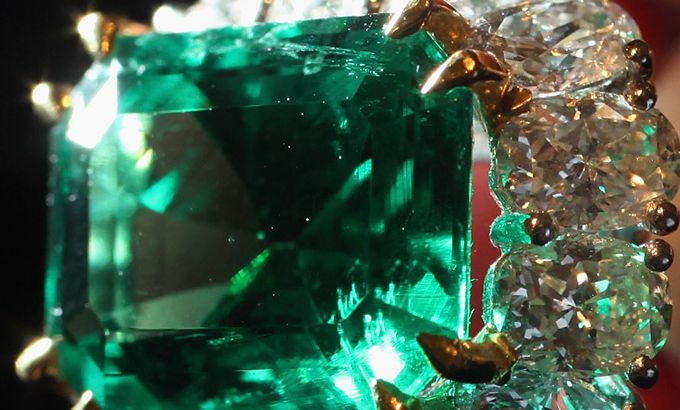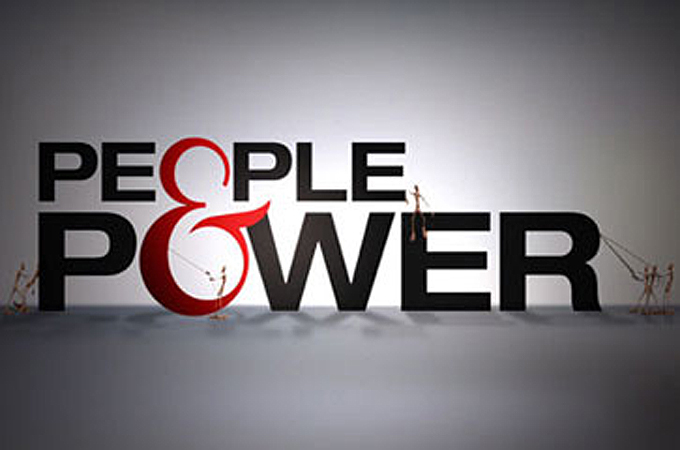
Colombia’s Emerald Tsar
Could the impending death of the controversial ‘godfather’ of Colombia’s emerald industry trigger a violent gang war?
Colombia is known for many things. On the plus side there is its vibrant lifestyle, its diverse and beautiful landscape with heart stopping vistas, its rich culture and history and, of course, its fabulous coffee.
On the debit side there is its unfortunate place at the top of the world league of cocaine producers and a reputation for violence born out of South America’s longest running armed conflict, between government forces, left-wing insurgents and right-wing paramilitaries.
Keep reading
list of 4 itemsWhy are nations racing to buy weapons?
Parallel economy: How Russia is defying the West’s boycott
US House approves aid package worth billions for Ukraine, Israel
And then there are its emeralds.
To those who covet the sparkling green gems, Colombia is where the very finest stones – those with the deepest colour and fewest imperfections and trace elements – are to be found.
Emeralds have been mined there since antiquity and were as much prized by the Incan nobility as they were by the Spanish conquistadors who spread across the ‘new world’ in the 16th century.
Today, Colombia is responsible for almost two-thirds of the world’s production of fine emeralds; commerce that brings in hundreds of millions of dollars in much needed export income.
But as anyone who knows about the country’s most notorious export business – narcotics – will appreciate, where there is money to be made in Colombia, violence and criminality can all too easily follow.
Emerald wars
In the 1980s, territorial disputes between some of the country’s leading mining families escalated into a full-blown conflict, centred around the Western Boyaca province, where most of the stones are to be found.
Before long the country’s most powerful drug gangsters, the Medellin cartel, became involved too – sensing an opportunity to establish a new supply corridor from the cocaine growing regions in the interior to the coast. And of course, they also saw a chance to take a slice of the huge profits the emerald industry generated.
The mine owners fought back, even as they were fighting among themselves, and by the end of the decade more than 6,000 people had been killed. Inevitably – as is often the case in Colombia – many of them were civilians caught up in the gun battles between rival paramilitary forces.
But eventually one mine owner emerged out of this brutal conflict with sufficient power to impose his authority on the rest. That man is Victor Carranza, or Don Victor as many call him – the tsar of Colombia’s emerald industry.
Though he had fought as vigorously (and as viciously, some say) as his rivals, he had the foresight to realise that the quarrels were causing more harm than benefit.
In 1990, the warlord re-invented himself as a peacemaker and turned to the Catholic Church for help. Together they brokered a peace that has held – mostly – for more than two decades and established Carranza’s firm control over the emerald business.
He became fabulously wealthy as a result (although no-one can be absolutely sure, he is reckoned to be a dollar billionaire) and a key figure in the country’s complex political landscape.
To the people of Western Boyaca, which he has ruled with an iron fist, he is the ‘Godfather’, a man to be both respected and feared.
To the politicians, he had held in his sway – including a number of Colombia’s presidents – he is someone to be courted and protected from legal sanction.
And to his rivals and enemies, he is simply someone they yearn to be rid of – only they have never managed to do so.
Carranza has survived several assassination attempts – the most recent in 2010 when a convoy of vehicles he was in was ambushed by a gang armed with heavy automatic weapons and rocket propelled grenades.
In the gun battle that followed, two of his bodyguards were killed and the cars were shredded. But somehow the elderly tycoon survived, typically firing off six shots himself at his would-be assailants before taking refuge.
A ‘damaged’ peace
Yet now it transpires that his enemies will not have to wait long before this hugely controversial figure quits the scene. In his late 70s, Carranza is terminally ill and he knows he does not have long to go. As he told filmmaker Fernando Lucena, who went to Colombia to make this remarkable profile for People & Power, the end could come at any time: “Six years ago I was diagnosed with prostate cancer and I never took a pill for that. But two years ago I got lung cancer and that one has got me all the way up to the hair …. It’s about time for God to remember me and call me to his side.”
But Carranza insists it is not death that worries him; it is the thought of what is going to happen to the concord he brokered more than two decades ago.
“The peace we signed 23 years ago is cracking. It’s damaged. People don’t treat it with the respect we gave it when we reached those compromises and that is a very grave and delicate thing. And I don’t like it.”
Writer Pedro Claver, who has made a study of Carranza’s role in the last Emerald War, goes further. He believes Carranza’s death could be the trigger for another internecine conflict.
“While Carranza is alive he holds all the control, but behind him there is another generation that could restart the conflict …. If there is another big find [of emeralds] there will be another war … and the kind of war that could erupt will have a lot in common with the wars from the past,” Claver says.
No wonder then that as the Emerald Tsar’s last days approach, many of his fellow Colombians look to the future with great foreboding.
People & Power can be seen each week at the following times GMT: Wednesday: 2230; Thursday: 0930; Friday: 0330; Saturday: 1630; Sunday: 2230; Monday: 0930. Click here for more on People & Power. |
